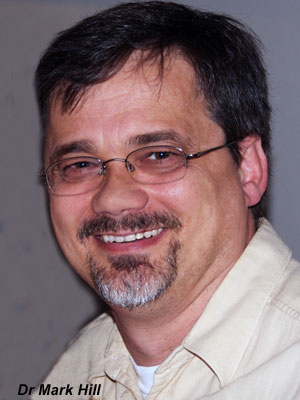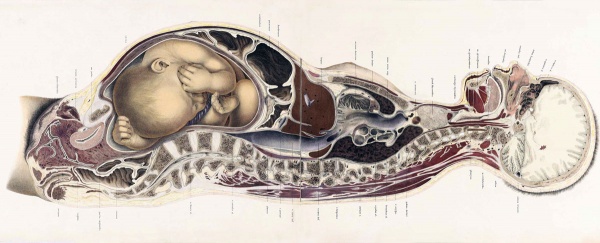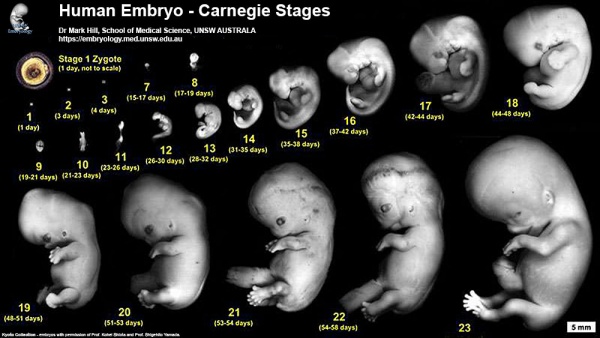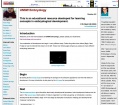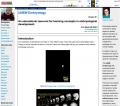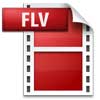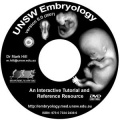ANZACA Meeting 2012 - Embryology: Difference between revisions
| Line 50: | Line 50: | ||
** Science contact hours: Lectures 20, Practicals 48. | ** Science contact hours: Lectures 20, Practicals 48. | ||
==Embryology Online== | |||
<gallery> | |||
File:Microfiche_reader.jpg|pre-1997 | |||
File:Embryology website 2001.jpg|2001 | |||
File:Embryology website 2004.jpg|2004 | |||
File:Embryology website 2007.jpg|2007 | |||
File:Embryology website 2004-2007.jpg|Hits 2004-07 | |||
</gallery> | |||
==UNSW Embryology== | ==UNSW Embryology== | ||
Revision as of 13:03, 10 December 2012
Embryology in an Anatomy World
Embryology Integration into Clinical Anatomy Education using Online Resources
Australian and New Zealand Association of Clinical Anatomists (ANZACA) Meeting 2012
- December 9 to 11 at the Crowne Plaza, Coogee, Sydney, Australia.
- Links: Conference Homepage | SOMS notice | Embryology
Draft Page - notice removed when complete.
Abstract
Developmental Anatomy Integration into Clinical Anatomy Education using Online Embryology Resources
Clinical anatomy pedagogy was traditionally taught through wet specimens and is now supplemented by a range of videos and other online resources. Clinical embryology was also traditionally taught as "micro-anatomy" using models and/or histological sections from key stages of development. This methodology was always limited in both scope and accessibility. This presentation will demonstrate how dynamic events in embryology can be integrated into new developmental anatomy educational methods.
In 1996 online embryology education at UNSW began with histological sections and a small number of other support resources. In 2004, a new Medicine program began that “blurred” the discipline approach to clinical anatomy teaching, now being integrated into broader cross-discipline “scenarios”. This also provided an opportunity to redesign embryology lecture and practical resources that students could access during and outside of face-to-face teaching times. In 2009, these integrated resources were moved to a new “Wiki” platform, allowing student contributions and knowledge assessment through quiz format items. Pedagogy now is a broad mixture of educational resources classified by anatomical systems and integrated into developmental timelines including: text, histology, normal and abnormal anatomy images, scanning electron micrographs, animations, ultrasound, magnetic resonance imaging, research materials, links and online textbook access. These can be easily updated in response to student feedback and accessed from anywhere with internet access. Students can now relate both normal and abnormal development to the clinical adult anatomy.
This full presentation and the demonstrated resources can be accessed at: http://embryology.med.unsw.edu.au/embryology/index.php?title=ANZACA_Meeting_2012_-_Embryology
Introduction
|
|
Teaching Contact Hours
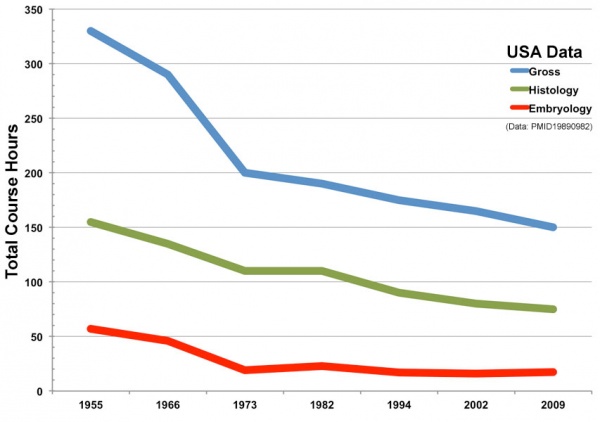 Trends in anatomy disciplines contact teaching hours based on data from USA survey.[1]
Trends in anatomy disciplines contact teaching hours based on data from USA survey.[1]
- Online survey were constructed to gather basic information about gross anatomy, microscopic anatomy, neuroscience/neuroanatomy, and embryology courses.
- 2009 total of 130 allopathic and 25 osteopathic medical schools in USA.
- Number of responses (Gross anatomy 65, Microscopic anatomy 45, Neuroscience/Neuroanatomy 31, Embryology 43)
- UNSW Embryology
- Medicine contact hours (lecture and practicals, including foundations and phase 2) is 24 hours.
- Science contact hours: Lectures 20, Practicals 48.
Embryology Online
UNSW Embryology
| Old Med program | New Med program |
|
|
Old Med Program
- Embryo histology
- Sections from week 5, 8 and 10
- mid-embryonic, end embryonic, early fetal
- taught “micro-anatomy”
- Models
- Early development, week 5, heart
- Posters
- Commercial and in-house
- Abnormalities
New Med Program
Foundations
- First year
- Introduction to human development
- Overview of timeline
- Identify first trimester events
- Critical periods of development
- Terminology
Beginnings, Growth and Development (BGDA)
- Content - timeline
- Fertilization to week 3
- Week 3 to 8
- Fetal development
- Placenta
- Dynamics of development
Beginnings, Growth and Development (BGDB)
- Content - Selective systems
- Gastrointestinal tract
- Head and sensory (hearing)
- Urogenital
- Vertically integrated
- Gross anatomy - Adult systems
- Histology - Selected tissue structure
Beginnings, Growth and Development (BGD2)
- Content - Applied Embryology and Teratology
- Clinical stage
- Apply basic embryology to clinical setting
- Using Australian statistical data
- Assisted reproductive technology data
- Pre-term birth
- Applied teratology
- Critical periods of development
- Placenta and renal function
- Drug categories
Embryology Online
Glossary Links
- Glossary: A | B | C | D | E | F | G | H | I | J | K | L | M | N | O | P | Q | R | S | T | U | V | W | X | Y | Z | Numbers | Symbols | Term Link
Cite this page: Hill, M.A. (2024, April 18) Embryology ANZACA Meeting 2012 - Embryology. Retrieved from https://embryology.med.unsw.edu.au/embryology/index.php/ANZACA_Meeting_2012_-_Embryology
- © Dr Mark Hill 2024, UNSW Embryology ISBN: 978 0 7334 2609 4 - UNSW CRICOS Provider Code No. 00098G
- ↑ <pubmed>19890982</pubmed>
